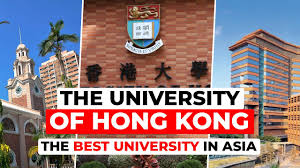
PhD in Physics: Surface tomography for sustainable development, surface characterization of materials for sustainable development.
Lund University was founded in 1666 and is repeatedly ranked among the world’s top 100 universities. The University has around 44 000 students and more than 8 000 staff based in Lund, Helsingborg and Malmö. We are united in our efforts to understand, explain and improve our world and the human condition.
Lund University welcomes applicants with diverse backgrounds and experiences. We regard gender equality and diversity as a strength and an asset.
The Division of Synchrotron Radiation Research (http://www.sljus.lu.se ) is a part of the Department of Physics and has more than 50 employees. The focus of the research is on experimental studies of electronic, structural, and chemical properties of materials. The Division is developing a new activity focusing on magnetic properties. At the Division we use and develop a wide range of large facility- and lab-based techniques. We are in addition engaged in the development of the MAX IV Laboratory in the fields of beamlines, experimental stations, techniques for synchrotron radiation and the accelerator systems. And we have a close collaboration with the European Spallation Source (www.esss.se), which is a new European neutron source under development next to MAX IV. MAX IV (www.maxiv.lu.se/) is a national large-scale research laboratory hosted by Lund University and situated within biking distance from the Department of Physics. It provides scientists from Sweden and the rest of the world with the most brilliant Synchrotron radiation source and instrumentation for research in areas such as materials science, structural biology, chemistry and nanotechnology.
For more information about the main supervisor of the project, please see: http://www.sljus.lu.se/staff/johan-gustafson
Work duties
The successful candidate will work with the development of a new method for surface characterisation of materials for sustainable development. It will include development of measurement strategies and, especially, programming software for advanced tomographic data analysis.
Properties of surfaces and interfaces are crucial for several processes and devices, such as catalysis, electrochemistry, fuel cells and batteries, which are all of major importance in the transition to a sustainable society. These properties are, however, very difficult to investigate in real devices, especially under working conditions, and much of the R&D is based on “trial-and-error”. Fundamental understanding of properties of surfaces and interfaces would be highly valuable for a rational design of future devices.
In this context, surface X-ray diffraction (SXRD) is a unique method with its ability to determine surface structures, under industrially relevant conditions, with an accuracy down to 0.01 Å. Presently, however, the use of SXRD is limited to single crystals or similar samples where the X-ray scattering is similar from the whole surface.
The aim of the present project is to develop SXRD tomography, which will make it possible to determine surface structures of much more realistic samples. The concentrated and intense X-rays from the latest generation of synchrotrons, such as MAX IV, in combination with a tomographic analysis method will enable spatially resolved SXRD measurements. This will open up new opportunities for investigations of the relation between surface structure and function within a wide range of applications. The application that will be in focus of the present project is catalysis, with the aim to study reactions that can reduce the greenhouse effect.
The project combines experimental work with data analysis. The experiments will be done at MAX IV as well as other synchrotrons and our own X-ray lab. The main challenge of the project will be to develop the advanced data analysis methods that are needed for the tomographic reconstruction of the surface structures, which will require extensive programming-based development.
The successful applicant will take part in the research school HELIOS (https://www.heliosgraduateschool.org/), which gives access to a wide range of courses and meetings as well as longer exchange visits at the research institute DESY in Hambung, Germany.
The main duties of doctoral students are to devote themselves to their research studies which includes participating in research projects and third cycle courses. The work duties can also include teaching and other departmental duties (no more than 20%).
Admission requirements
A person meets the general admission requirements for third-cycle courses and study programmes if he or she:
- has been awarded a second-cycle qualification, or
- has satisfied the requirements for courses comprising at least 240 credits of which at least 60 credits were awarded in the second cycle, or
- has acquired substantially equivalent knowledge in some other way in Sweden or abroad.
A person meets the specific admission requirements for third-cycle studies in Physics if he or she has:
- passed an independent project (e.g. degree project) of at least 30 credits in a relevant subject
Equivalent knowledge acquired through corresponding programmes will be assessed individually. In order to enable interdisciplinary initiatives and important specialisations in certain areas, students with qualifications in subjects other than Physics may be considered for admission.
Finally, the student must be judged to have the potential to complete the programme.
Additional requirements:
- Very good oral and written proficiency in English.
Other assessment criteria
For this position, basic programming skills and interest is of major importance. Experience with X-rays are not required but is considered a merit in the assessment.
Further, experience within any of the following areas is also considered a merit.
Digital image processing. Diffraction methods. Surface structure determination. Synchrotron radiation. Catalysis.
Basis of assessment
Selection to postgraduate studies is based on the expected ability to perform well in the studies. The evaluation of the ability to perform well is based primarily on the results of studies at the basic and advanced levels, in particular:
- Knowledge and skills relevant to the thesis project and the subject of the study.
- An assessment of ability to work independently and to formulate and tackle research problems.
- Written and oral communication skills
- Other experience relevant to postgraduate studies, such as professional experience.
Consideration will also be given to good collaborative skills, drive and independence, and how the applicant, through his or her experience and skills, is deemed to have the abilities necessary for successfully completing the third cycle programme.
Terms of employment
Only those admitted to third cycle studies may be appointed to a doctoral studentship. Third cycle studies at LU consist of full-time studies for 4 years. A doctoral studentship is a fixed-term employment of a maximum of 5 years (including up to 20% departmental duties). Doctoral studentships are regulated in the Higher Education Ordinance (1993:100), chapter 5, 1-7 §§.
Instruction on how to apply
Applications shall be written in English and include a cover letter stating the reasons why you are interested in the position and in what way the research project corresponds to your interests and educational background. The application must also contain a CV, degree certificate or equivalent, and other documents you wish to be considered (grade transcripts, contact information for your references, letters of recommendation, etc.).
The English version of this announcement is an interpretation of national formalities expressed in the Swedish text. In case of uncertainties, the Swedish text applies.
The Faculty of Science conducts research and education within Biology, Astronomy, Physics, Geosciences, Chemistry, Mathematics and Environmental Science. The Faculty is organized into nine departments, gathered in the northern campus area. The Faculty has approximately 1500 students, 330 PhD students and 700 employees.
The Department of Physics is one of Lund University’s largest departments with approximately 400 employees. The department is shared between the Faculty of Science and Faculty of Engineering. At the department there are seven research divisions and a number of major research centra. The research at the department covers a wide range of modern physics.
www.fysik.lu.se/en/
We kindly decline all sales and marketing contacts.
| Type of employment | Temporary position longer than 6 months |
|---|---|
| First day of employment | As soon as possible |
| Salary | Monthly salary |
| Number of positions | 1 |
| Working hours | 100 |
| City | Lund |
| County | Skåne län |
| Country | Sweden |
| Reference number | PA2022/2411 |
| Contact | Johan Gustafson, +46462223870 |
| Union representative | SACO:Saco-s-rådet vid Lunds universitet, 046-2229364OFR/ST:Fackförbundet ST:s kansli, 046-2229362 |
| Published | 28.Jun.2022 |
| Last application date | 31.Aug.2022 11:59 PM CEST |




